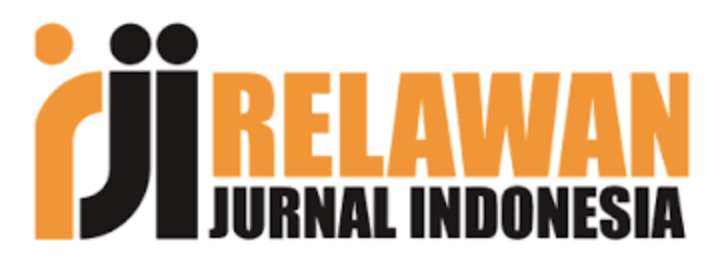Counseling And Training On Making Peppermint Leaf Hair Mask In Cibiru Wetan Village, Bandung District
DOI:
https://doi.org/10.70410/japm.v1i1.16Keywords:
toga, peppermint leave, hair maskAbstract
The village of Cibiru Wetan is known for its active community involvement through various working groups (pokja). One such group is the Family Medicinal Plants (TOGA) pokja, dedicated to cultivating plants at home for their medicinal benefits. TOGA plants are utilized not only for disease prevention (preventive), health promotion (promotive), disease treatment (curative), and health recovery (rehabilitative), but also for developing cosmetic products. Among the TOGA plants targeted for cosmetic development is peppermint leaf. Peppermint leaves are known to promote hair growth, prevent hair loss, reduce excess oil, alleviate scalp itchiness, and strengthen hair roots. Objective: This community service program aims to apply the cultivation of TOGA plants, particularly peppermint, as an additive in hair masks for the community of Cibiru Wetan village. Methodology: The implementation of this community service program includes the introduction, utilization, and processing of peppermint leaves into hair masks usable by the general public, with a focus on the residents of Cibiru Wetan village. Results: Through the execution of this engagement program, community knowledge has been enhanced in utilizing TOGA, specifically peppermint leaves, as an ingredient in hair masks for the residents of Cibiru Wetan village. Outcome Targets: This initiative endeavors for the residents of Cibiru Wetan village to learn how to utilize peppermint leaves effectively in hair masks, with the expectation of contributing to economic improvement within the community.
References
Abelan, U. S., de Oliveira, A. C., Cacoci, É. S. P., Martins, T. E. A., Giacon, V. M., Velasco,
M. V. R., & Lima, C. R. R. de C. (2022). Potential use of essential oils in cosmetic and dermatological hair products: A review. In Journal of Cosmetic Dermatology (Vol. 21, Issue 4, pp. 1407–1418). John Wiley and Sons Inc. https://doi.org/10.1111/jocd.14286
Gavazzoni Dias MF. (2015). "Hair cosmetics: an overview." Int J Trichology. 2015;7(1):2-15.
Kim KE, Cho D, Park HJ. (2016). "Air pollution and skin diseases: Adverse effects of airborne particulate matter on various skin diseases." Life Sci. 2016;152:126-134.
Li R, Brockschmidt FF, Kiefer AK, et al. (2012). "Six novel susceptibility Loci for early-onset androgenetic alopecia and their unexpected association with common diseases." PLoS Genet. 2012;8(5): e1002746.
MPOC, lia dwi jayanti, & Brier, J. (2020). ANALISIS PRODUK KOSMETIK MAKE UP SALAH SATU MEREK GLOBAL TERHADAP KEPUTUSAN PEMBELIA. Malaysian Palm Oil Council (MPOC), 21(1), 1–9. http://journal.um-surabaya.ac.id/index.php/JKM/article/view/2203%0A
Oh, J. Y., Park, M. A., & Kim, Y. C. (2014). Peppermint oil promotes hair growth without toxic signs. Toxicological Research, 30(4), 297–304. https://doi.org/10.5487/TR.2014.30.4.297
Sari, D. K., & Wibowo, A. (2016). Perawatan Herbal pada Rambut Rontok. Majority, 5(5), 129–134.
Semba RD, Sun K, Zhang P, et al. (2017). "Serum Micronutrients and the Subsequent Risk of Thyroid Cancer: Investigation of Functional Polymorphisms in Antioxidant Genes." Cancer. 2017;123(7):1208-1216.
Van Zuuren EJ, Fedorowicz Z, Carter B, et al. (2012). "Interventions for female pattern hair loss." Cochrane Database Syst Rev. 2012; 5: CD007628.
Downloads
Published
How to Cite
Issue
Section
Citation Check
License
Copyright (c) 2024 Jurnal Adiguna Pengabdian Masyarakat

This work is licensed under a Creative Commons Attribution 4.0 International License.
Authors who publish in Jurnal Adiguna Pengabdian Masyarakat agree to the following terms:
This license enables reusers to distribute, remix, adapt, and build upon the material in any medium or format, so long as attribution is given to the creator. The license allows for commercial use. CC BY includes the following elements:
BY: credit must be given to the creator.
You are free to:
- Share — copy and redistribute the material in any medium or format for any purpose, even commercially.
- Adapt — remix, transform, and build upon the material for any purpose, even commercially.
- The licensor cannot revoke these freedoms as long as you follow the license terms.
Under the following terms:
- Attribution — You must give appropriate credit , provide a link to the license, and indicate if changes were made . You may do so in any reasonable manner, but not in any way that suggests the licensor endorses you or your use.
- No additional restrictions — You may not apply legal terms or technological measures that legally restrict others from doing anything the license permits.
Notices:
You do not have to comply with the license for elements of the material in the public domain or where your use is permitted by an applicable exception or limitation .
No warranties are given. The license may not give you all of the permissions necessary for your intended use. For example, other rights such as publicity, privacy, or moral rights may limit how you use the material.














